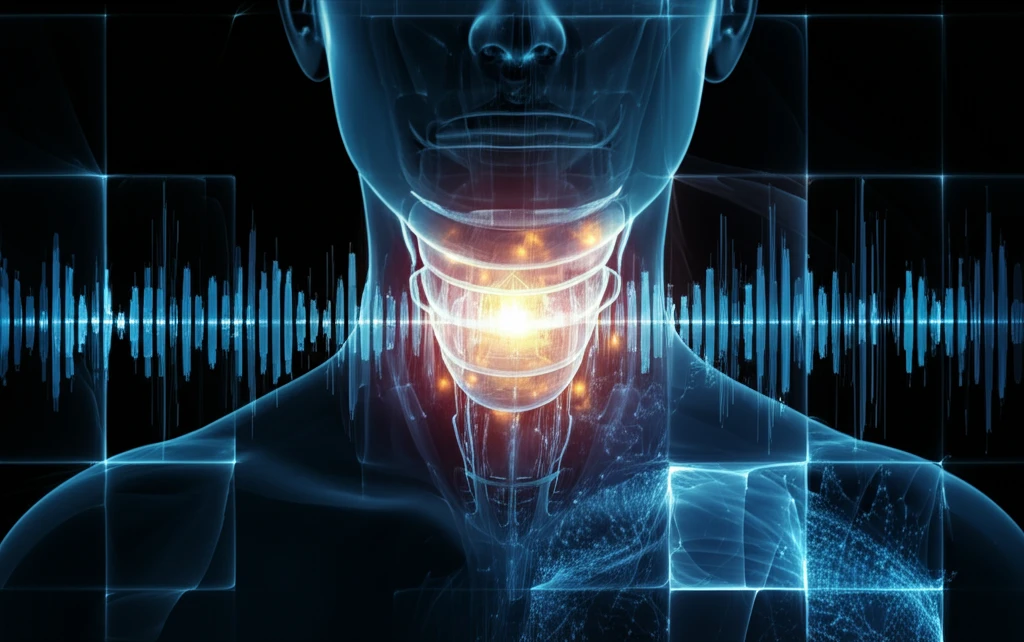
Finding Your Voice: How New Tech Is Helping Doctors Treat Vocal Cord Injuries
"Discover the latest advancements in vocal fold motion tracking and how they're changing the game for patients with recurrent laryngeal nerve injury."
Imagine not being able to speak clearly, struggling to swallow, or constantly feeling short of breath. These are the realities for many individuals suffering from recurrent laryngeal nerve (RLN) injury, a common complication of neck surgeries. This type of injury leads to vocal fold paralysis, impacting essential functions and significantly diminishing quality of life.
Traditionally, assessing vocal fold (VF) motion has relied on subjective evaluations, often involving visual assessments and rating scales. While these methods provide some insight, they are prone to variability and may miss subtle yet crucial changes in VF function. This is where innovative technology steps in to revolutionize the field.
Recent research has focused on developing objective, quantitative methods for analyzing VF motion. One such advancement is a custom-designed motion-analysis software that promises to transform how we understand and treat RLN injuries. This technology offers a more precise and repeatable way to detect even minor VF dysfunction, paving the way for better diagnostics and more effective therapies.
How Does This New Vocal Fold Tracking Tech Work?

The new software, comprised of VFTrack and VFQuantify, offers a comprehensive approach to analyzing VF motion. VFTrack is a motion-tracking component, while VFQuantify is an analytics module that computes a set of objective, quantitative outcome measures. These measures describe VF motion dynamics, enabling objective comparisons across time and populations.
- Transoral Laryngoscopy: A small endoscope is inserted into the mouth to visualize the vocal folds. Unlike studies involving humans, the use of anesthesia is necessary in animal models.
- VF Tracking: VFTrack identifies and tracks specific points on the vocal folds throughout the video recording.
- Data Analysis: VFQuantify analyzes the tracking data to generate objective measures of VF motion.
- Outcome Measures: The software calculates metrics like Mean Motion Range Ratio (MMRR) and Open Close Cycle Ratio (OCCR) to assess VF function.
What Does This Mean for the Future of Voice Treatment?
This innovative software represents a significant step forward in the assessment and treatment of vocal fold injuries. By providing objective, quantitative data, it enables clinicians to better understand the nuances of VF dysfunction and monitor treatment progress more effectively. Ongoing research is focused on adapting this technology for use in human patients, with the goal of improving diagnostics and tailoring therapies to individual needs. Imagine a future where voice disorders are diagnosed earlier, treated more effectively, and managed with greater precision, thanks to the power of advanced motion-analysis technology.
